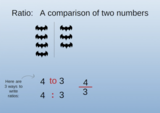
This lesson teaches about Rates, Ratios, and Unit Rates, using visually appealing art and real-life examples that will engage teenagers.
- Subject:
- Ratios and Proportions
- Material Type:
- Lesson
- Author:
- Janel Williams
- Date Added:
- 01/15/2021

This lesson teaches about Rates, Ratios, and Unit Rates, using visually appealing art and real-life examples that will engage teenagers.
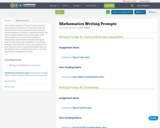
This is three examples of "Type III" documents that I have prepared for students to write about math. Our school uses the Collins system of writing, but these could be adapted to a variety of classroom settings. The topics could be middle school or early high school topics, and they are set up to allow students to indepedently express their knowledge of the given topics in short essay form.
In addition to the writing prompts, I have included a rubric that students use to peer-edit each others' rough drafts. Students then use this feedback form to make the necessary corrections and submit a subsequent final draft.
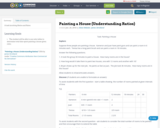
A task involving Ratios and Rates

In this activity, learners work in groups to determine the mass and volume of four samples: glass marbles, steel washers or nuts, pieces of pine wood, and pieces of PVC pipe. Learners then plot the data points on a large class graph of mass vs. volume to discover that data points for a particular material form a straight line, the slope of which gives the density of the material.

In this video from Cyberchase, the CyberSquad figures out how fast their broom must go so they can reach Motherboard before Wicked.
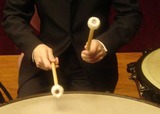
In this lesson, students are introduced to rate in the context of music. They will explore beats per minute and compare rates using mathematical representations including graphs and double number lines.Key ConceptsBeats per minute is a rate. Musicians often count the number of beats per measure to determine the tempo of a song. A fast tempo produces music that seems to be racing, whereas a slow tempo results in music that is more relaxing. When graphed, sets with more beats per minute have smaller intervals on the double number line and steeper lines on the graph.Goals and Learning ObjectivesInvestigate rate in music.Find beats per minute by counting beats in music.Represent beats per minute on a double number line and a graph.
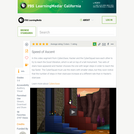
In this video segment from Cyberchase, Hacker and the CyberSquad race to reach the Good Vibration on staircases that grow at different rates and have steps of varying sizes.
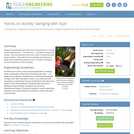
Students experientially learn about the characteristics of a simple physics phenomenon the pendulum by riding on playground swings. They use pendulum terms and a timer to experiment with swing variables. They extend their knowledge by following the steps of the engineering design process to design timekeeping devices powered by human swinging.
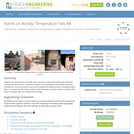
Students are introduced to the health risks caused by cooking and heating with inefficient cook stoves inside homes, a common practice in rural developing communities. Students simulate the cook stove scenario and use the engineering design process, including iterative trials, to increase warmth inside a building while reducing air quality problems. Students then collect and graph data, and analyze their findings.

Students overlay USGS topographic maps into Google Earth’s satellite imagery. By analyzing Denali, a mountain in Alaska, they discover how to use map scales as ratios to navigate maps, and use rates to make sense of contour lines and elevation changes in an integrated GIS software program. Students also problem solve to find potential pathways up a mountain by calculating gradients.
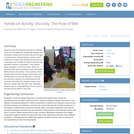
Students study the physical properties of different fluids and investigate the relationship between the viscosities of liquid and how fast they flow through a confined area. Student groups conduct a brief experiment in which they quantify the flow rate to understand how it relates to a fluid's viscosity and ultimately chemical composition. They explore these properties in milk and cream, which are common fluids whose properties (and even taste!) differ based on fat content. They examine control samples and unknown samples, which they must identify based on how fast they flow. To identify the unknowns requires an understanding of the concept of viscosity. For example, heavy cream flows at a slower rate than skim milk. Ultimately, students gain an understanding of the concept of viscosity and its effect on flow rate.